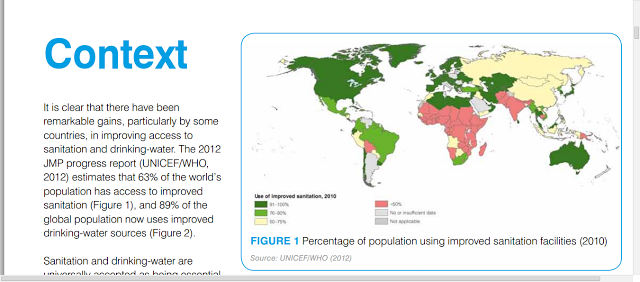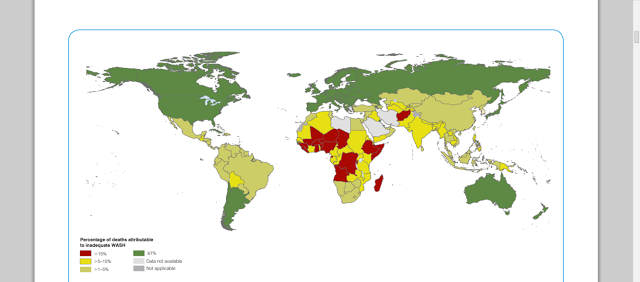

| Visitors Now: | |
| Total Visits: | |
| Total Stories: |

| Story Views | |
| Now: | |
| Last Hour: | |
| Last 24 Hours: | |
| Total: | |
Global Challenge of challenge of extending and sustaining sanitation services
From
Why “Sanitation Matters” for children is obvious: some 2.6 billion people in the World live without access to proper toilet facilities among them some 980 million young people under 18's. 280 million children under five live in homes without access to basic sanitation. Half of the (120 million) children born in the developing world each year will be born into homes without basic sanitation. They will be born but they don’t all live. As His Royal Highness said, more than 5000 children under 5-years-old die each day from inadequate water sanitation-diarrhea related causes.
And this has a devastating impact on their lives:
While the correlation between Under-five mortality and sanitation coverage is abundantly clear — the damage does not stop there. Diarrhea launches a cause and effect chain with tragic results, diarrhea is closely linked to under-nutrition, and under-nutrition is associated with more than half of all under-five deaths. Undernourished children, in turn, have compromised immune systems and are at a higher risk for developing pneumonia – a disease that kills more children than any other disease. This chain reaction illustrates that sanitation and hygiene improvements are the bedrock for children’s health. Without them, the children are vulnerable to a host of fatal and debilitating diseases.
UN-Water Global Analysis and Assessment of Sanitation and Drinking-Water (2012 report)
The case for even greater efforts is undeniable. even if the rate of progress cited in the JMP report (UNicef/Who, 2012) were to continue until the end of the MDG period, universal water and sanitation coverage would still be far off—in 2015, 605 million people would remain without access to an improved drinking-water source, and 2.4 billion people would be without access to improved sanitation facilities. Given this scenario, billions will remain at risk of WASh-related diseases such as diarrhoea, which in 2011 killed 2 million people and caused 4 billion episodes of illness
The Gates Foundation is trying to improve water saniation and hygeine by reinventing the toilet.
See more and subscribe to NextBigFuture at 2013-03-06 01:16:17 Source: http://nextbigfuture.com/2013/03/global-challenge-of-challenge-of.html
Source:




